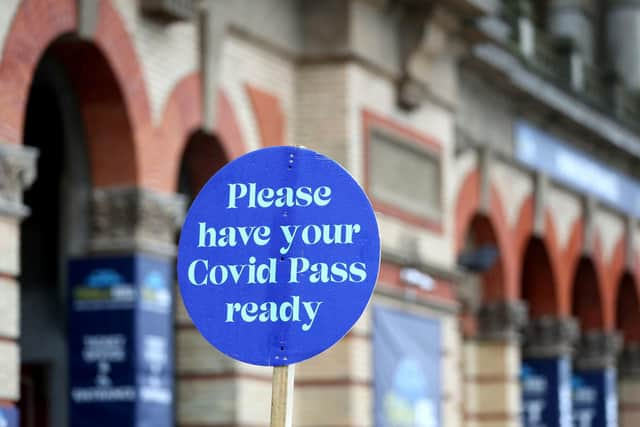Covid: Isolation time halved by US health agency
Centres for Disease Control and Prevention (CDC) officials said the guidance was in keeping with growing evidence that people with coronavirus are most infectious in the two days before and three days after symptoms develop.
The decision was also driven by a recent surge in Covid-19 cases, propelled by the Omicron variant.
Advertisement
Hide AdAdvertisement
Hide Ad

Early research suggests Omicron may cause milder illnesses than earlier versions of the coronavirus.
But the sheer number of people becoming infected – and therefore having to isolate or quarantine – threatens to crush the ability of hospitals, airlines and other businesses to stay open, experts say.
CDC director Rochelle Walensky said the country was about to see a lot of Omicron cases.
"Not all of those cases are going to be severe. In fact many are going to be asymptomatic," she said.
"We want to make sure there is a mechanism by which we can safely continue to keep society functioning while following the science."
Last week, the agency loosened rules that previously called on healthcare workers to stay out of work for ten days if they test positive.
The new recommendations said workers could go back to work after seven days if they test negative and do not have symptoms.
And the agency said isolation time could be cut to five days, or even fewer, if there are severe staffing shortages.
Advertisement
Hide AdAdvertisement
Hide AdNow the CDC is changing the isolation and quarantine guidance for the general public to be even less stringent.
The guidance is not a mandate; it is a recommendation to employers and state and local officials.
Last week, New York state said it would expand on the CDC's guidance for healthcare workers to include employees who have other critical jobs that are facing a severe staffing shortage.
It is possible other states will seek to shorten their isolation and quarantine policies, and the CDC is trying to get out ahead of the shift.
"It would be helpful to have uniform CDC guidance" that others could draw from, rather than a mish-mash of policies, Ms Walensky said.
The CDC's guidance on isolation and quarantine has seemed confusing to the public, and the new recommendations are "happening at a time when more people are testing positive for the first time and looking for guidance", said Lindsay Wiley, an American University public health law expert.
Suspending both isolation and quarantine after five days is not without risk.
A lot of people get tested when they first feel symptoms, but many Americans get tested for other reasons, like to see if they can visit family or for work. That means a positive test result may not reveal exactly when a person was infected or give a clear picture of when they are most contagious, experts say.
Advertisement
Hide AdAdvertisement
Hide AdWhen people get infected, the risk of spread drops substantially after five days, but it does not disappear for everyone, said Dr Aaron Glatt, a New York physician who is a spokesman for the Infectious Diseases Society of America.
"If you decrease it to five days, you're still going to [get a] small but significant number of people who are contagious," he said.
Comments
Want to join the conversation? Please or to comment on this article.
